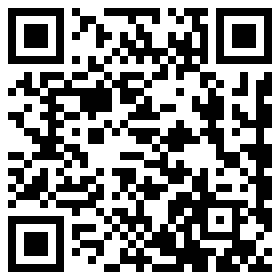To learn about Layer 2 basics and Optimistic rollups head to Part 1: Optimistic Rollups.
So once again, let’s start with the basics.
What are ZK-Rollups?
Zero-knowledge rollups (ZK-rollups) are layer 2 scaling solutions that increase the throughput on Ethereum Mainnet by moving computation and state-storage off-chain.
To prove the correctness of the state changes, ZK-rollups produce validity proofs. Through the validity proofs, ZK-rollup protocols prove that the proposed changes to Ethereum’s state are the result of executing all the transactions in the produced batch with cryptographic assurance.
What is the difference between ZK-Rollups and Optimistic Rollups?
The most significant difference between optimistic rollups and Zk-rollups is that optimistic rollups assume that all transaction batches are legitimate when proposing changes to Ethereum Mainnet’s state, while ZK-rollups require cryptographic validation before doing so.
ZK-rollups require cryptographic validation, while Optimistic rollups assume all transaction batches are valid.
Due to validity proofs, ZK-rollups only need to provide validity proofs to finalize transactions on Ethereum instead of posting all transaction data on-chain. In contrast, optimistic rollups provide all of the transaction data within each batch.
Due to this difference, there are minimal delays when moving funds from a ZK-rollup to Ethereum Mainnet because validity proofs of ZK-rollups prove that exit transactions are accurate. This is different from optimistic rollups, where due to the design of assuming all transactions are valid, there is a significant delay when withdrawing funds from optimistic rollups to allow time for anyone to challenge the exit transaction by providing fraud proof.
When comparing ZK-rollups and optimistic rollups through a cryptographic proof lens, ZK-rollups seems to be the clear winner. However, in the lens of the actual use case, things get a bit muddier due to their difference in design.
Due to assuming all transactions are valid, optimistic rollups are better production-ready with easier programmability for blockchain developers. Also, optimistic rollups facilitate the effective use of EIP-4844 which ensures cost efficiency.
Look at the chart below from 101blockchains that illustrates the differences between optimistic rollups and Zk-rollups.

Zk-Rollup Networks

Loopring
Loopring launched through an ICO in August 2017 and was integrated into Ethereum on December 2019 by Loopring. Loopring aims to offer the same security guarantees as Ethereum Mainnet, with a big scalability boost of increasing throughput by 1000x, and reducing the gas fee to just 0.1% of Ethereum Mainnet. A total of $114M is locked in Loopring at the moment.
Token:The LRC Token (LRC) is an ERC-20 compliant token that is used to incentivize protocol-desirable behavior from liquidity providers, insurers, and DAO governors. The protocol fees are derived from economic activity on the Loopring L2.
Notable dApps:
Uniswap
Loopring Exchange

zkSync
zkSync is a user-centric ZK-rollup platform from Matter Labs that launched on June 2020 that supports payments, token swaps, and NFT minting on its native products, and currently has the lowest real tx costs across all existing and planned rollups. A total of $54.02M is locked in zkSync at the moment.
Notable dApps:
1Inch
Storj
Yearn Finance

ZKSpace
ZKSpace was launched on December 2020 by L2 Labs. The ZKSpace native platform consists of an AMM DEX, a payment service, and an NFT marketplace. A total of $38.36M is locked in ZKSpace at the moment.
Token:ZKSwap (ZKS) Token is the ERC-20 token that drives the ZKSwap network. It incentivizes all actions on the network and is also used to govern the network and verify transactions.
Notable dApps:
ZKSwap
ZKWallet

Aztec Network
Aztec was launched on February 2020 that focuses on privacy and scalability for Ethereum. It strives to enable affordable, private crypto payments via zero-knowledge proofs. A total of $2.72M is locked in Aztec at the moment.
Notable dApps:
AAVE
Lido
In conclusion
ZK-Rollups are another great solution in which the blockchain community is trying to solve the current scalability issue with the Ethereum Mainnet.
There are multiple zero knowledge rollup chains out there with differences in their technology and purpose. Currently, as mentioned in this piece, development is much more active in optimistic rollup networks due to its ease of use and development but we cannot deny that zero-knowledge rollups have an advantage in security thanks to validity proofs. We will likely see exciting new developments in zero-knowledge rollups in the near future.
Stay tuned for the next piece in this series where we will discuss another scaling solution, sidechains.
https://medium.com/coinmonks/what-is-the-best-ethereum-scaling-solution-part-2-zk-rollups-e673f014789c






All Comments